Categories
Latest Updates
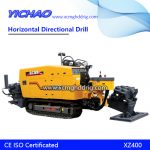
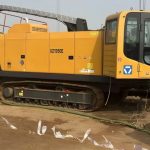
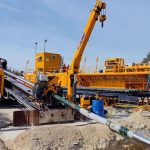
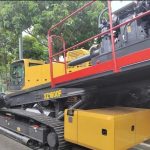
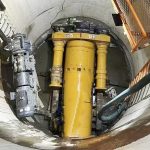
How to deal with the mud generated by trenchless pipe jacking construction?
In terms of urban construction, we are increasingly adopting trenchless pipe jacking construction technology, through steering, directional drilling and other means, in the case of excavation of a very small part of the surface (generally refers to small area excavation at the entrance and exit) , The construction of laying, replacing and repairing various underground pipelines, the trenchless pipe jacking construction technology produces a lot of mud while creating good economic benefits. How to deal with the mud generated by the trenchless pipe jacking construction?
The mud generated by trenchless pipe jacking construction mainly has two aspects: one is that the ground cracks and mud is emitted from the ground during the construction, and the other is that the waste mud has no place to be dumped or cannot be disposed of. Shaanzhong Branch provides the perfect solution for mud treatment. The specific solution focuses on the following points:
Mud displacement should be controlled according to geological conditions. Controlling the mud displacement during the drilling of the pilot hole is the key to avoid mud escaping. If the phenomenon of slurry escaping is avoided when drilling the pilot hole, the probability of slurry escaping from the ground during reaming and dragging is very low, because after the pilot hole is completed, the pressure on both sides of the entry and excavation points reaches equilibrium, and the mud The flow direction is on both sides of the entry and exit points, and the slurry in the area passed by the crossing axis will be reduced accordingly. Therefore, in order to achieve this purpose, the displacement of the mud pump must be reasonably controlled according to the geology, because the general shallow geology is backfill soil or backfill garbage, which is very soft and has poor compactness, so it is necessary to reduce the mud pressure to below 2Mpa, In addition, the flow rate of the mud should be reduced according to the size of the drill bit used. Sometimes the flow rate is only 150 liters/min. It is necessary to avoid the mud escaping from the ground caused by excessive mud displacement and high pressure, which will cause pollution in the construction area.
Using the mud cleaning and recycling system, the mud returned from the mud pool is subjected to a series of purification treatments such as desilting and sand removal, and the mud is reused to achieve the purpose of controlling the amount of mud.
After the completion of the crossing construction, the waste mud in the site is liquid, easy to flow, and difficult to handle. It is necessary to use a mud solidifying agent (the main components are silicate, coagulant, adsorbent, etc.), which can consolidate the mud and then solidify. , to prevent the water-soluble migration of mud components and achieve the purpose of protecting the environment. The mud is solidified and then transported away. The curing agent has water resistance, can limit the diffusion of water erosion, and significantly reduce the chemical oxygen consumption, oil content, suspended solids and heavy metal migration pollution of the mud. It is added to the waste mud to make it solidify quickly.
According to the construction process of crossing, the use of curing agent can solidify the waste mud. The cured product after treatment has high compressive strength and no longer has the ability to return to the slurry. The soaking experiment shows that the harmful substances are relatively thoroughly fixed. , reaching the national secondary discharge standard for industrial sewage, which can completely solve the problem of waste drilling fluid pollution.
Using the mud solidification technology, the waste mud can be treated, but the treatment cost is high, and it is difficult for professional and technical personnel to carry out, subject to certain restrictions, most of them are transported out of the site by tank trucks.
That is to say, after the waste mud in the field is processed, it is transported by a special dump truck to the dumping site designated by the environmental protection supervision department, and must not be discarded at will. Finally, the site was cleaned up and the landscape was restored. This method has large transportation volume and high cost, and is suitable for small-scale engineering projects. Due to the high cost of large-scale projects, this method is generally not used.
The new centrifugal mud processor is used for mud treatment, which can realize the desire of no external mud transportation. It is the latest technology of oilfield drilling mud purification. This system can be directly installed on the original mud circulation tank, which can quickly remove the waste mud into the mud. The separated water and soil are separated, the separated soil can be directly shoveled and loaded with a shovel, and the separated water can be directly reused in the mud irrigation, which not only reduces the discharge of waste mud, but also is conducive to environmental protection, effectively reducing the mud pollution. The use and disposal costs have truly achieved civilized construction and environmental protection construction.
